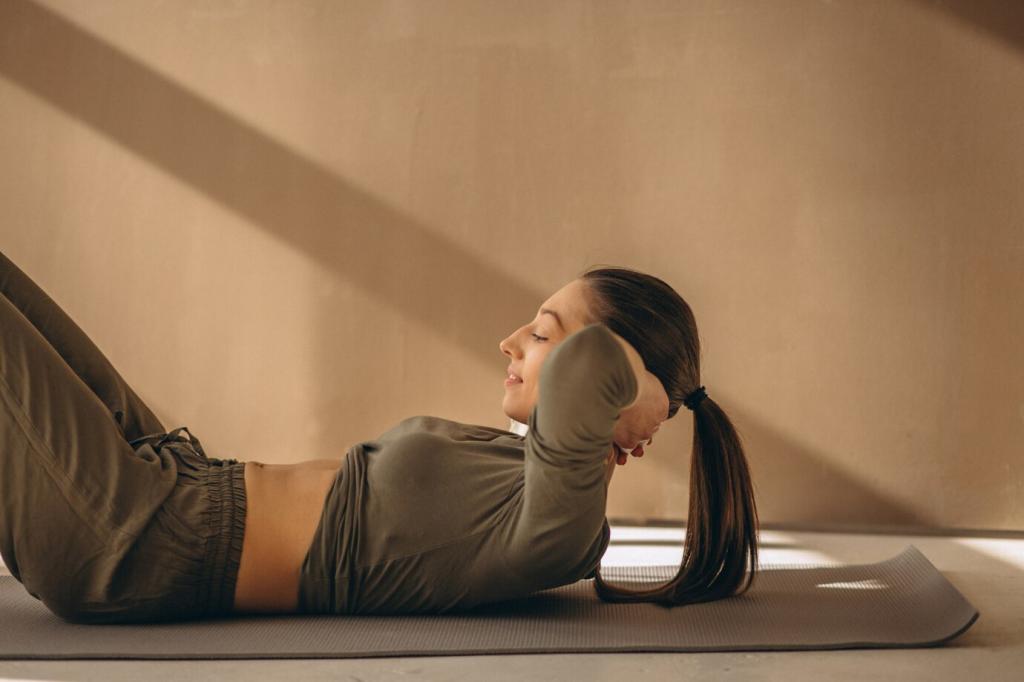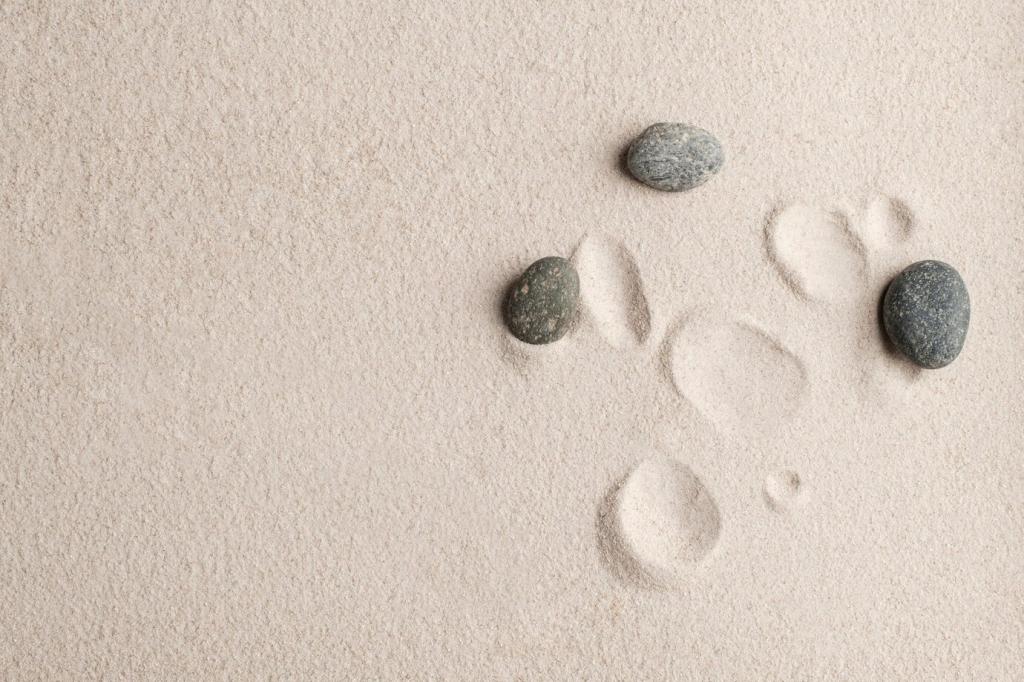Elements of a Minimalist Meditative Space

This is the heading
Lorem ipsum dolor sit amet, consectetur adipiscing elit. Ut elit tellus, luctus nec ullamcorper mattis, pulvinar dapibus leo.

This is the heading
Lorem ipsum dolor sit amet, consectetur adipiscing elit. Ut elit tellus, luctus nec ullamcorper mattis, pulvinar dapibus leo.
Light as a Gentle Guide
Natural Light Rituals
Welcome morning light with open blinds and five mindful breaths. The gradual brightness cues wakefulness without jarring the senses. Research shows morning daylight supports stable sleep patterns. How does the sun’s path touch your room, and when does it feel most supportive?
Soft, Layered Illumination
Use indirect lamps, paper shades, or frosted bulbs to avoid glare and harsh shadows. Create layers: one low lamp for grounding, another for reading, a candle for ceremony. Subtlety keeps attention inward, promoting calm presence and steady focus without eye strain.
Candle Safety and Presence
A single candle can signal beginning and end. Keep it on a stable, heat-safe surface, away from drafts and fabric. Watch the flame while exhaling slowly. Extinguish with gratitude. Tell us your candle ritual and how that small glow shapes your stillness.
Materials that Breathe
Wood, Linen, Clay
Unfinished wood warms the room without clamoring for attention. Linen cushions and throws feel cool, then soften with use. A simple clay bowl can hold incense, pebbles, or notes. These materials patina over time, becoming companions to your daily practice.
A Quiet Color Palette
Limit the palette to calming neutrals—soft whites, warm beiges, gentle grays, muted greens. Fewer colors reduce decision fatigue and visual noise. If you crave contrast, add it with natural elements like a stone or leaf, keeping the overall harmony intact.
Tactile Honesty
Let objects feel like themselves: grainy wood, cool ceramic, breathable cotton. High shine and synthetic textures can excite the senses. Aim for finishes that invite slow touch, deep breaths, and grounded posture. What textures make you exhale more fully?
Sound, Scent, and Silence
Choose gentle, consistent sounds: rustling leaves, distant rain, or a low, sustained tone. Avoid melodic hooks that snag attention. Even a quiet white-noise track can soften street clatter. Share your favorite soundscape and how it changes the texture of your meditation.
Create a micro-zone: mat, cushion, folded throw, small tray. Keep it stable and ready, so practice requires no setup. The brain loves frictionless beginnings. What is the smallest complete zone you can assemble that invites you to sit for two quiet minutes?
Layout and Flow
Choose seating that encourages an upright yet relaxed spine. A firm cushion or low bench often beats plush chairs. Knees supported, hips slightly elevated, jaw soft. Share your posture tweaks—each small adjustment can transform discomfort into steady, breathable ease.
Layout and Flow
Rituals that Root the Day
Arrival Ritual
Enter, pause, place phone face down. Touch the focal object, inhale for four counts, exhale for six. Light a candle or ring a bell. This brief choreography signals safety and attention. What three-step arrival ritual could you repeat every single morning?
Breath and Bell
Set a gentle timer with a warm tone. Practice three rounds of box breathing, then rest in natural breath. When the bell sounds, smile slightly before moving. Over time, this simple pairing links sound with ease. Invite a friend to try and compare notes.
Evening Reset
Before bed, return objects to their homes, fluff the cushion, and clear surfaces. Whisper gratitude for one moment of clarity. Resetting preserves the space’s promise for tomorrow. Share your nightly reset photo or checklist to inspire fellow readers to close their day softly.



